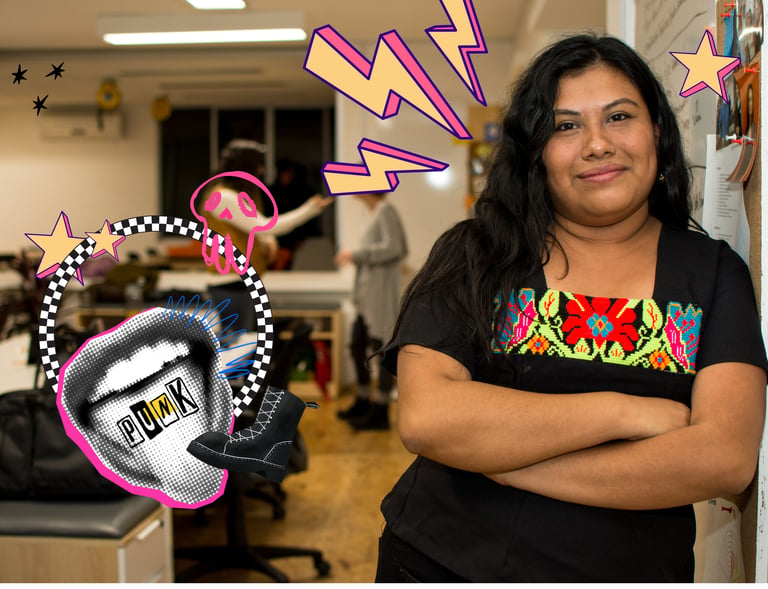The Issue with Indigenous Fashion
An earnest piece that confronts the tension between cultural expectations and personal truth, asserting that being modern doesn’t mean abandoning tradition.
10/17/20252 min read


I remember walking into my tia’s house for Día de los Muertos, the smell of copal thick in the air, tamales steaming in the kitchen, and candles flickering on the family altar. But this time, I wasn’t wearing the usual traditional purepecha attire we wear in Michoacan, Mexico: a pleated skirt, a perfectly folded rebozo, and a huanengo (traditionally embroidered top). Instead, I showed up in traditional men’s embroidered trousers a black leather tank under my rebozo, and worn-in doc martens.
My cousin looked me up and down. Her eyes paused on the boots, then the pants, then the leather top - and then my cousin told me gently but firmly, "You're not dressed correctly”.
But I was.
See, this happens to me all the time. My very traditional Mexican family mocks how I dress. They think I’m confused on how traditional clothes should be worn because I'm US born. Or they think I'm intentionally trying to be defiant. But neither is true.
I love my culture, that’s why I wear it. But I also love myself. And I’m not just one thing. I’m queer, I’m punk, and I’m indigenous. So I wear all of that - sometimes at once. I wear the old with the new. I wear doc martens with embroidery. I rock a traditionally loomed rebozo over a sexy leather top. I wear my ancestors patterns in silhouettes and gay as fuck contexts they could have never dreamed of. The intention isn’t to disrespect tradition. It's to pull it forward with me, into a world where all parts of who I am get to breathe.
Tradition isn’t meant to be a cage- it's a root system. It tethers me, yes, but it also nourishes my growth. So why should I have to choose between honoring my people and honoring the person I’ve become? Why can’t my clothes show every part of me - the ones I was born into and the ones I claimed on my own?
The issue with indigenous fashion is that people expect it to stay frozen in time or only worn the “traditional” way. When indigenous people try to modernize or modify our traditional attire, it's met with judgement or resistance. But indigenous clothing shouldn't be stuck in the past. Woven into our garments are stories, traditions, resilience, but also vision, innovation, and who we’ve become. Native people have every right to wear a ribbon skirt with doc martens (in fact, I do all the time).
Native clothes aren't a relic; they’re a living, breathing, evolving force. They keep growing with us, shaped by our ancestry, land, and community. The ways we carry those connections today might not look the same as they did generations ago, and that’s not something to fix- that’s growth. The idea that we have to keep doing things exactly the same way to be truly indigenous? That’s a colonial myth. We have every right to evolve while still maintaining cultural identity.
No culture, no people, are meant to be stuck in time. Everything evolves. We must change the narrative that native clothes and culture are only valid if they’re fixed in time.
Embracing modern indigenous expression not only in fashion, but also art, language, and culture at large, isn’t a break from tradition, but a continuation of it. Tradition and modernity are not mutually exclusive. It’s time to recognize that native people have every right to exist fully in the present, to shape the future, and to define for ourselves what it means to be indigenous today. Modernity doesn't erase us. It elevates us.